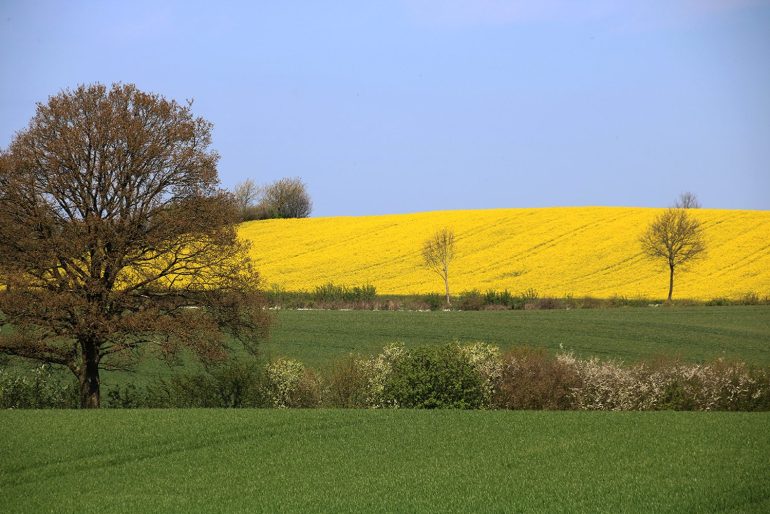One study clarified that like tall dew, they permeate many of Europe’s arable landscapes: traditional hedgerow forests composed of shrubs and trees form important refuges for plants. Strips of vegetation should now be allowed to grow in width, according to test results, to protect them against more frequent extreme weather conditions during climate change.
Over the course of history, man has transformed the once forested Europe into a cultural landscape that often has few natural elements. These include wall hedges, especially in northern and western Europe. These strips of vegetation between fields and meadows featuring trees and shrubs have a centuries-old tradition. In some areas they also form an aspect of cultural identity. This is especially true in England and northern France, but also in northern Germany – where wall hedges are also known as “nicks”. In the beginning, however, the focus was not on nature conservation: strips of vegetation served as living fences, as a source of timber and food, and as a wind break. In the meantime, however, the ecological importance of wall hedges has come into focus. Because it is known that they enable many animal and plant species to survive in the agricultural regions of Europe.
Substitute Habitat for Forest Species
The international research team, led by Katherine Litza from the University of Bremen, focused on species of herbaceous plants that also grow in vegetation belts that are characteristic of woody plants. As part of their study, the scientists collected data from hundreds of hedgerows in southern Sweden, England, Belgium, northern France and Germany. The characteristics of existing plant species and associated vegetation belts were recorded. In addition, information was collected about the regional climate, the surrounding landscape, and measures to maintain the hedge.
As the scientists report, their evaluations prove the important role of wall hedges as replacement habitats: “We have shown that a large diversity of forest plant species can live in European hedges. Thus hedges form important refuges.” Species such as wood anemone, star chickweed or spotted arum find habitat in wall hedges because they have forest-like conditions,” says Litza, especially in areas with little forest. Turns out that species composition varies by region. However, overriding patterns were still found,” Litza says.
Against climate impacts with more detail
The researchers were also able to show which factors influence the occurrence of forest species in wall hedges. A well-known basic principle is shown again: the more intensive the agricultural use of nearby farms, the fewer species were found. Above all, the study proves a relationship between species diversity and the width of vegetation strips, which can range from a few meters to more than ten. The researchers explain that wide-wall hedges have a beneficial effect because they are able to better buffer extreme weather conditions than narrower ones. “The internal climate is more stable in wide hedges than in narrow ones,” explains Litza. In this context, a Europe-wide study now provides solid evidence that broad hedges are home to significantly more forest species than narrower ones.
According to the researchers, this is important in the context of expected growth during climate change: because extreme weather events such as drought will increase in the future, the protection of extensive wall hedges is important, or the increase is understandable. The study results also clearly support this: hedges that have been exposed to extreme drought or heat in recent years are less species-poor. “Since such weather events will probably increase due to climate change, we fear that even more hedges may lose species in the future,” Litza says. The researchers therefore demand that care measures and management strategies be adapted to the European level. “It is important to take into account the width of the hedges as a key element for biodiversity,” the ecologist says.
Source: University of Bremen, Expert article: Ecosystems and Environment, doi: 10.1016/j.agee.2021.107809

Web guru. Amateur thinker. Unapologetic problem solver. Zombie expert. Hipster-friendly travel geek. Social mediaholic.





